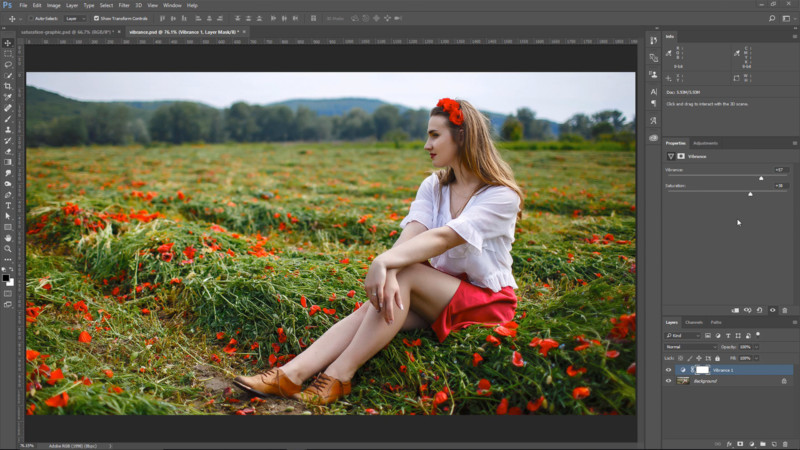The Difference Between Vibrance and Saturation
To the untrained eye, the difference between the vibrance and saturation sliders is not immediately obvious. Jesús Ramirez of Photoshop Training Channel explains the subtle difference between these two useful tools in this 5-minute video.

The saturation slider is generally more aggressive than the vibrance slider in that it affects all colors in the image, regardless of how saturated they already are. When using the Hue/Saturation panel this is even more obvious – pushing the slider to 100 creates ugly posterization. The saturation slider in the Vibrance panel has a more subtle effect, but it still affects all colors in the image.

The vibrance slider, on the other hand, only affects muted colors and leaves skin tones and already-saturated colors alone. This creates a much more natural-looking image.

If you’d like to boost the muted colors and the skin tones in an image, you can juggle the two sliders until you achieve the look you’re after.

It’s a short video, but if you want to skip ahead, here are the different sections:
00:40 – How the Hue Saturation and Adjustment Layer works
01:20 – How Saturation Works in the Vibrance Adjustment Layer
01:50 – How Vibrance Works in the Vibrance Adjustment Layer
02:23 – How Vibrance and Saturation affect saturation values
04:55 – How To Use Vibrance to color enhance your photos.